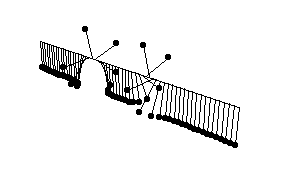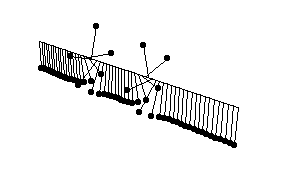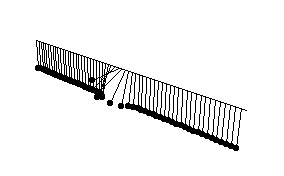 Permanent Exhibition
Permanent Exhibition Permanent Exhibition
Permanent Exhibition
The term "sine-Gordon equation" is presumably a kind of joke, obviously originating in the name of the "Klein-Gordon equation" in relativistic field theories. As this name shows, this equation is a relativistic nonlinear equation in 1+1 dimensional space-time. Its precursor, just the KdV equation, can be found in the 19th century mathematics (Darboux's work on surface geometry). The sine-Gordon equation, too, has a wide range of applications in physics, not only in relativistic field theories but in solid-state physics, nonlinear optics, etc.
In order to visualize solutions, we use a coupled pendulum model. This is a mechanical model consisting of an elastic wire (or, rather, a straight spring) attached with perpendicular rods in an equal spacing. The rods behave as a pendulum receiving an angular force from the two neighboring rods through twist of the wire. (One can do a cheaper experiment using a rubber string and needles in place of a wire and rods.) In the limit as the spacing of rods tends to zero, this mechanical system approaches the sine-Gordon equation.
Soliton solutions of the sine-Gordon equation are far richer than those of the KdV and modified KdV equations. Even the 1-solution soliton solution consists of two different cases -- "kink" and "anti-kink". A kink is a solution whose boundary values at the left infinity is 0 and at the right infinity is 2pi; the boundary values of an anti-kink is 0 and -2pi, respectively. More intuitively, the chain of pendulums, in both cases, winds up once around the wire, but in an opposite direction. Similarly, 2-soliton solutions can be classified into several distinct cases -- collision of two "kinks", collision of two "anti-kinks", collision of a "kink" and "anti-kink", and a kind of "bound state" called "breather solution". The last one is rather hard to explain, but the animation will clearly show how it behaves.


